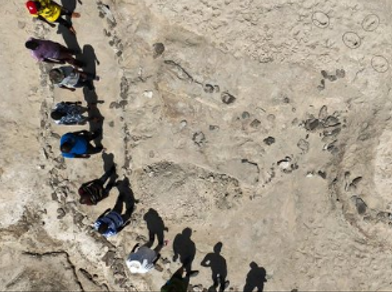1.5 million-years-old footprints reveal unknown secret about human species
04-Dec-2024.

A new study has unveiled fossilised footprints from two ancient human species, Homo erectus and Paranthropus boisei, that coexisted in northern Kenya approximately 1.5 million years ago.
Discovered at the Koobi Fora site near Lake Turkana, these footprints provide the first physical evidence that these distinct species shared the same landscape, raising intriguing questions about their interactions and potential competition for resources.
Researchers identified a series of trackways, including a notable set of 12 footprints attributed to an adult Paranthropus boisei, characterised by their flat-footed gait and ape-like traits.
In contrast, three isolated footprints resembling those of modern humans were linked to Homo erectus, which exhibited a more advanced bipedal locomotion typical of our own species.
This finding indicates that the two species may have walked the shores of the ancient lake within hours or days of each other, possibly even encountering one another without any evidence of interaction.
Paleoanthropologist Louise Leakey, a co-author of the study published in Science, emphasized the significance of these findings: “The fossil footprints provide us a clear picture of that instant in time... The different human ancestors may well have passed by each other.”
The study also suggests that dietary differences might have allowed these species to coexist without direct competition. While Paranthropus boisei likely fed on tough plant materials requiring extensive chewing, Homo erectus was omnivorous, utilizing tools for hunting and processing meat.







